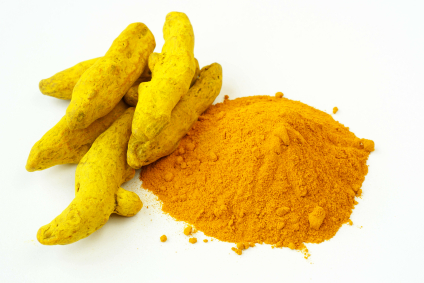
Turmeric (Curcumin - an ingredient found in the turmeric spice)
In the U.S., turmeric is best known as a spice. It's one of the main components of curry powder. In India and other parts of Asia, turmeric is used to treat many health conditions. It is believed to have anti-inflammatory, antioxidant, and perhaps even anticancer properties. As an inflammatory it can help slow down or stop the body's inflammation response when not needed and preserve health by not wasting resources of immune system which can strengthen immune responses when really needed.
Why do people take turmeric?
Curcumin, a substance in turmeric, may help to reduce inflammation. Several studies suggest that it might ease symptoms of osteoarthritis and rheumatoid arthritis, like pain and inflammation.
Other compounds in turmeric might also be medicinal.
How to take turmeric conveniently.
Turmeric capsules can be purchased over the counter and best to take with food. Turmeric root can be purchased at many grocery stores, ususally beside ginger root, and sliced and mixed in food, smoothies. Also can use the root and steep in hot water as a tea. Turmeric/ginger root tea with lemon is very tasty and aromatic.
In lab tests, curcumin seems to block the growth of certain kinds of tumors. One study showed that turmeric extract containing curcumin could -- in some cases -- stabilize colorectal cancer that wasn't helped by other treatments. But more research is needed.
Other preliminary lab studies suggest that curcumin or turmeric might protect against types of skin diseases, Alzheimer's disease, colitis, stomach ulcers, and high cholesterol. Based on lab studies, turmeric and curcumin might also help treat upset stomach, scabies, diabetes, HIV, uveitis, and viral infections.
But it’s important to keep in mind that most of these studies have been done in the laboratory. Researchers haven’t yet conducted significant studies on the benefits of turmeric and curcumin. So it's too early to say what health benefits turmeric might have.
How much turmeric should you take?
Turmeric has years of traditional use and some preliminary convincing research. There is no standard dosage. Ask your health care provider for advice. Many bottles of turmeric capsules will suggest 2,000 milligrams at 1,000 mgm twice daily while other research has shown 500 mgm. once a day with meals. It's difficult to understand the dosage recommendations other than the manufacturers trying to increase consumption for greater sales.
Where does turmeric come from?
Turmeric is a spice, and common ingredient in Curry blends. Used extensively in Indian recipes. The spice (and supplement) comes from the underground stems (rhizomes) of the turmeric plant.
How to grow turmeric root.
Turmeric is likely best known as a pungent and bright yellow spice in Indian cuisine. It’s a tropical plant, and can only be grown outdoors if you live in zones 9 or warmer. Your plants won’t be able to tolerate any climate colder than 65F. If in climates colder than zone 9 tropical suggested propagation is by container gardening ( video here).
Turmeric is different from most herbs in that you are not going to be harvesting the leaves, but the roots instead. The plant grows an underground tuber, or rhizome much like ginger does. It can take up to 10 months for a new crop of roots to develop, and it’s not a plant that you can harvest in small pieces through the season.


